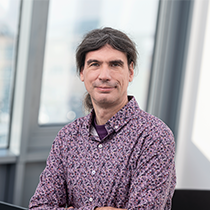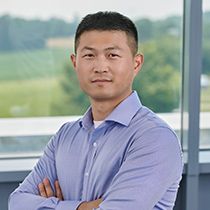Optimal Design Accuracy through Overbuild Prediction
The Overbuild Prediction of CASIMIR/Automotive allows for precise forecasting of the necessary foam geometry expansion to achieve the target design after the upholstery process. It is essential to ensure that the upholstery is evenly supported, allowing it to lie taut without requiring excessive assembly forces.
Why Overbuild Prediction?
Achieving Design-A-Surface-Geometry

During manufacturing, the foam is deformed in certain areas, particularly on the bolsters at geometric curves, due to the upholstery. This deformation leads to undesirable deviations from the intended Design-A-Surface. To minimize these deviations, the foam geometry must be selectively increased. It is crucial to determine where and to what extent adjustments are needed to achieve the Design-A-Surface in the finished seat.
Tight upholstery attachment

By adding extra foam, the seat cover can be stretched more tightly and consistently over the surface. This leads to fewer wrinkles, producing a smooth and visually appealing result. A tighter fit also enhances the seat's ergonomics by ensuring the cover conforms closely to the foam's contours. This alignment provides better support and comfort, optimizing the seating experience for the user and improving both form and function.
Avoiding compression set

Foams naturally compress and lose volume over time due to continuous use and the effects of aging. Incorporating a small additional geometric overbuild helps counteract this issue. The extra foam layer serves as a protective buffer, helping to maintain the seat's original shape and firmness. This prolongs the seat's lifespan, ensuring it retains consistent comfort and structural integrity over a more extended period.
Combination of overbuild and wrinkling simulation for optimized seats
With the optional Overbuild Prediction feature of CASIMIR/Automotive, it is possible to optimize foam geometry regarding the three points mentioned above. Based on the strain distributions and boundary forces determined during the upholstery simulation, it is also possible to assess the risk of wrinkling, and the hand forces required for upholstery attachment.
Please contact us personally
________
We will be happy to support you in solving your tasks relating to virtual seat development, seating comfort and virtual human models.

M. Sc.
Aravinda Veeraraghavan
Technical Support
+49 931 49708-182
veeraraghavan@woelfel.de
Contact form
Computational Mechanics of Materials and Structures, Universität Stuttgart
M.Sc.
Die neuesten Technologien zum Nutzen der Kunden erlernen und einsetzen.
To be at the top of innovation.
Computational Mechanics of Materials and Structures, Universität Stuttgart
M.Sc.
Die neuesten Technologien zum Nutzen der Kunden erlernen und einsetzen.
To be at the top of innovation.




![[Translate to English:] [Translate to English:]](/fileadmin/_processed_/f/f/csm_2019-11-kachel-dummys_02_d5f2003f99.jpg)
